Ball mill steel ball configuration
As a widely used grinding equipment, the filling of the grinding body (steel ball) is very important. During the working process of the ball mill, the friction between the steel ball and the material produces a grinding and peeling effect. Only by ensuring that the gradation of the grinding body (steel ball) is reasonable and the various grinding bodies have a certain proportion, can it be adapted to the particle size composition of the material to be ground. , to obtain a good grinding effect. Reasonable selection of the gradation of ball mill steel balls is a measure to improve the output and product quality of the ball mill.
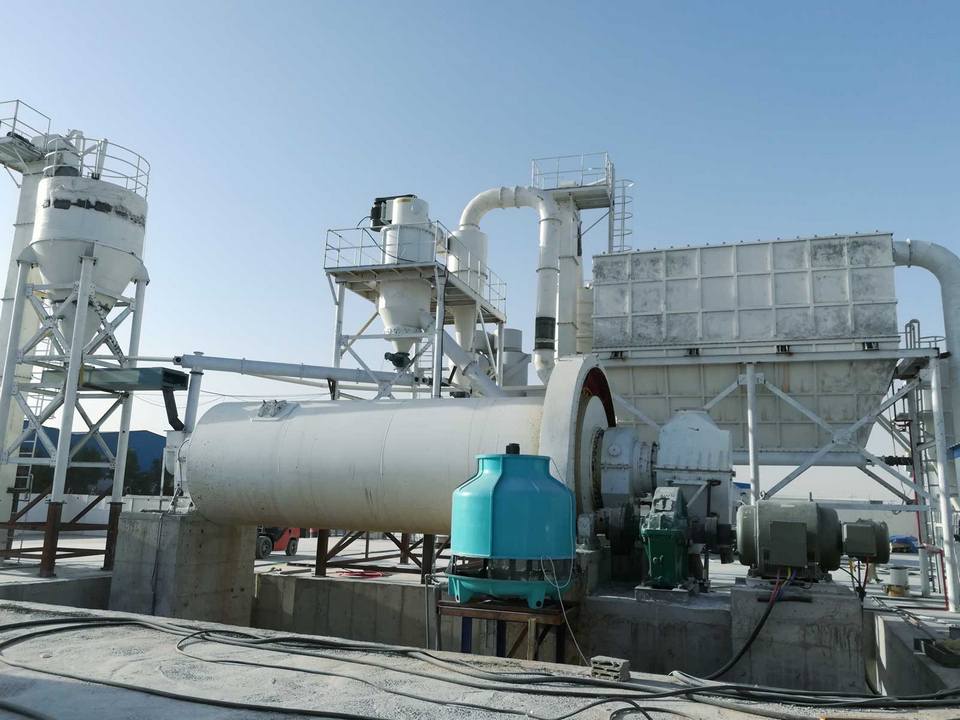
The basic principles of ball mill steel ball grading are:
(1) Under normal circumstances, the larger the diameter of the mill, the larger the impact force, so the diameter of the steel ball is relatively small;
(2) When dealing with ore with high hardness and coarse particle size, it needs a large impact force, so it is necessary to load a steel ball with a larger size. That is, the harder the material, the larger the diameter of the steel ball;
(3) Generally follow the principle of "fewer two ends, more in the middle", that is, four-level ball distribution, less large and small balls, and more balls in the middle.
When choosing a steel ball, there are many factors to consider. Such as the type of mill and the diameter and length of the cylinder; the hardness, toughness and particle size requirements of the material to be ground; large or small balls cannot be blindly pursued; the material should be selected according to actual needs.
After the ball mill is installed, the equipment needs to be run-in, and the processing capacity should be gradually increased, so the addition of steel balls is not completed at one time. Under normal circumstances, in the test run stage with load, the addition of steel balls needs to be completed in three to four times and adjusted according to the measured fineness of the material.
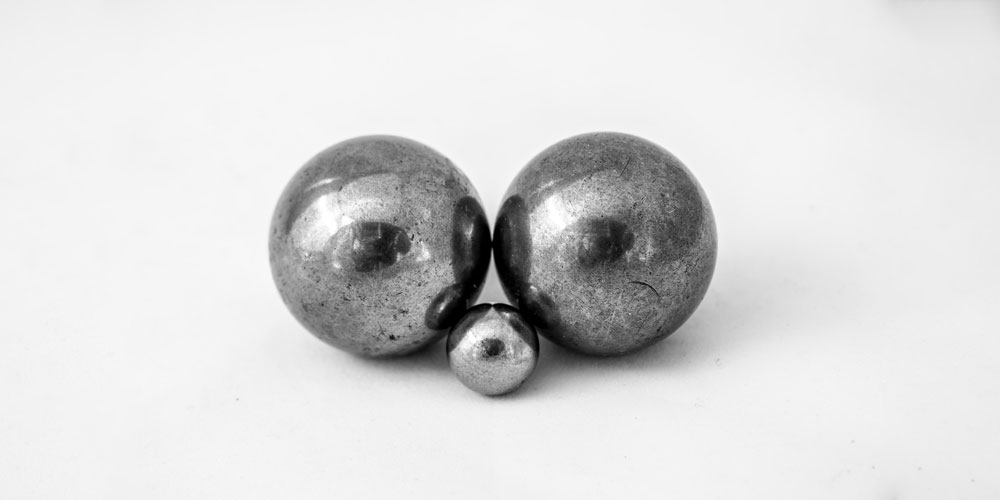
After the normal operation of the ball mill, the steel balls will continue to wear during the operation. In order to maintain the filling rate and reasonable ratio of the steel balls and maintain the stable operation of the ball mill, reasonable supplementary balls must be carried out to compensate for the wear and tear. Reasonable friction between steel balls and steel balls, steel balls and ore, steel balls and the lining plate of the ball mill will make the large ball mill small and the medium ball mill into small balls. So under normal circumstances, there is no need to add a small ball.
Each user must carefully analyze their actual situation, and only through long-term research and accumulation can they find out the right loading ratio and addition amount, and must not add blindly.
The steps & principles of purchasing a ball mill
As we all know, ball mill equipment is a professional equipment for grinding materials. From the beginning of grinding metallurgy and mining industry, it has flourished in many industries. Now the more common ones are quartz sand ball mill, cement ball mill, ceramic ball mill, rubber lining ball mill, white ash ball mill, Calcium powder ball mill, etc., so the selection of ball mill equipment is more complicated.
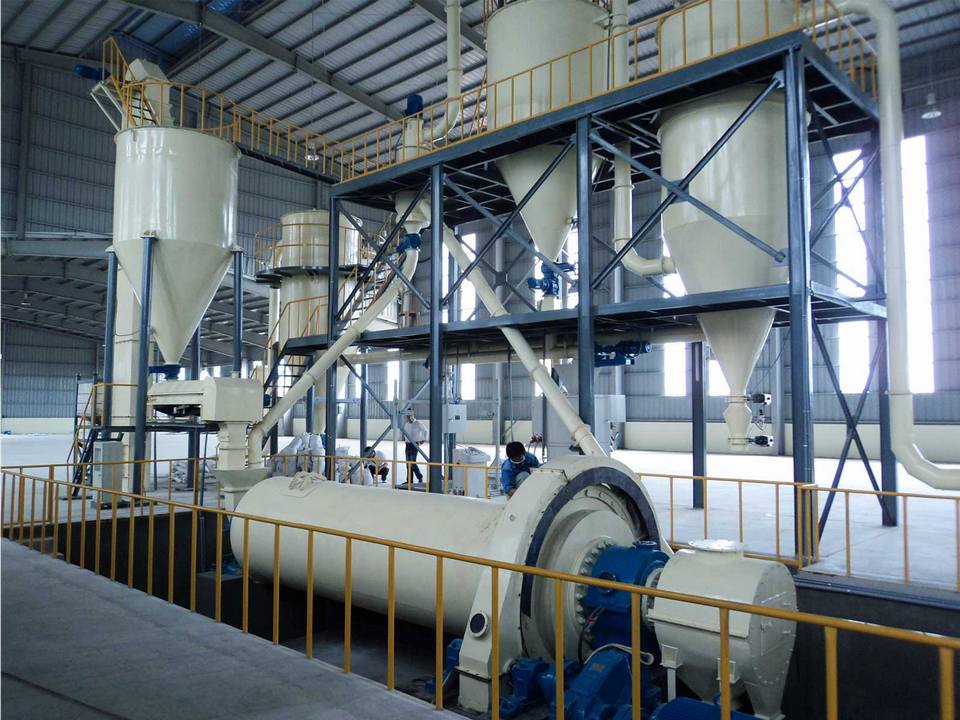
Select the corresponding type of ball mill equipment according to our own materials. For example, the materials to be ground are slag, quartz sand, steel slag, etc., then we choose the corresponding type of ball mill: slag ball mill, quartz sand ball mill, steel slag ball mill, the following takes quartz sand ball mill as an example .
The material to be ground is quartz sand. It is necessary to estimate the daily output of the quartz sand ball mill production line, and then select the corresponding type of quartz sand ball mill according to the output. The principle of choosing the model of quartz sand ball mill is that it is not too big, not too small, just right, because the small model will lead to the failure of the original planned production, and the large model will waste resources and occupy a larger area of land and so on.
It is very important to determine the type and model of the ball mill, but it is more important to find the right ball mill manufacturer, because the ball mill equipment manufacturer is related to the quality, process and after-sales service of the ball mill, and the quality of the ball mill is related to the stability of the later production. The advanced ball mill grinding process can improve the quality of the grinding materials, and at the same time, it can also increase the output and reduce the energy consumption. Ball mill equipment belongs to a kind of mechanical equipment, and all kinds of mechanical equipment cannot be guaranteed to be foolproof. In the long-term use process, problems with ball mill equipment are inevitable. Contact the manufacturer as soon as possible, and timely repair of the problem is the important part of after-sales service. Therefore, high-quality after-sales service can not only quickly repair the ball mill equipment, but also improve the production efficiency of the ball mill production line. .
Factors of gear wear of ball mill
According to the investigation, when the ball mill is in operation, most of the components are running very well, except that the large and small gears of the ball mill are frequently worn out, and the scrap rate is very high, which increases the production cost. So what causes the gear wear of the ball mill?
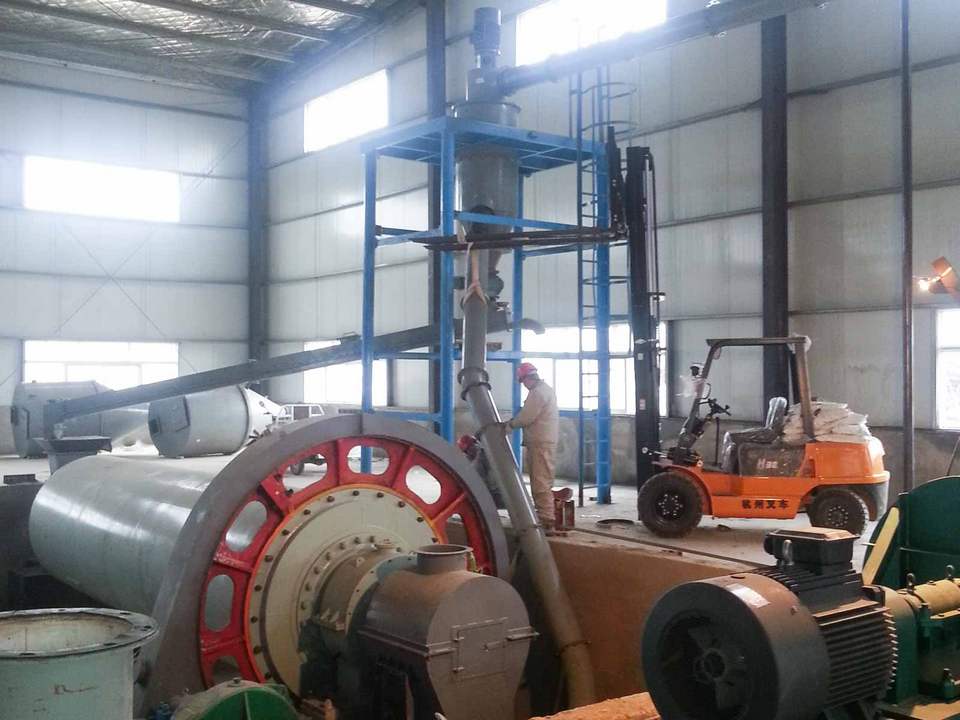
1. Poor lubrication conditions: In actual operation of the ball mill, the lubrication effect of the gear lubrication points is not ideal, because as the gear rotates or the speed increases, most of the grease does not enter the gear surface under the action of centrifugal force. It was thrown to the gear cover, and dropped onto the surface of the gear in the vibration of the gear cover, and was still directed to the gear cover, and finally fell to the bottom of the gear cover. As a result, the gear meshing parts have poor lubrication conditions, and dry friction or boundary friction will occur at the local meshing points of the tooth surface, causing serious wear and failure of the gear surface.
2. Frequent slurry leakage of the equipment: During the operation of the ball mill, due to improper operation or improper maintenance, there is a slurry leakage in the ball mill, and the slurry enters the gear without being cleared in time, causing the gear to wear; or the threaded hole at the hole cover of the ball mill is leaking. Pulp, causing gear wear.
3. Poor sealing performance: If the performance of the sealing element of the ball mill is too poor, a large amount of debris will enter the grease during operation, such as excessive mineral pulp, powder particles and other impurities. As a result, the gear lubrication conditions are worse, aggravate the wear of the gear, shorten the operating life of the gear, and increase the user's production cost.
4. The installation accuracy cannot be achieved: Although the ball mill has a simple structure and high manufacturing and installation accuracy requirements, when installing the gear of the ball mill, the manufacturing process and installation methods must be emphasized. If the lubricating oil is not added in time during installation to relieve the friction of the installation, the wear will be increased and the service life of the ball mill gear will be short.
Reasons for the lower and lower output of ball mills
- "Saturated grinding" is the main reason that affects the output of ball mills
When the output of the ball mill is getting lower and lower, the first thing to consider is whether there is a phenomenon of "saturated grinding". The causes of "saturated grinding" are: too much feed; the hardness and particle size of the grinding material become larger; The material has too much moisture; the steel ball grading is unreasonable; the compartment board or the grate is blocked by debris. The solution to the "full grinding" problem: reduce the amount of feed; when the size or hardness of the grinding material changes, make corresponding adjustments in time; adjust the water content of the grinding material; reasonably configure the large, medium, and small steel balls Than; clean up the blockage of the compartment board or grate seam; increase the ventilation of the ball mill cylinder.
- The working time of the ball mill is too long
The length of the milling time directly affects the product composition and purity, and the impact of the milling time on the particle size is also obvious. In the initial stage, with the extension of time, the particle size decreases faster, but after the ball milling for a certain period of time, even if the ball milling time continues to be extended, the particle size value of the product does not decrease too much. Different materials have different optimal ball milling times. On the other hand, the longer the milling time, the more serious the pollution caused, which affects the purity of the product.
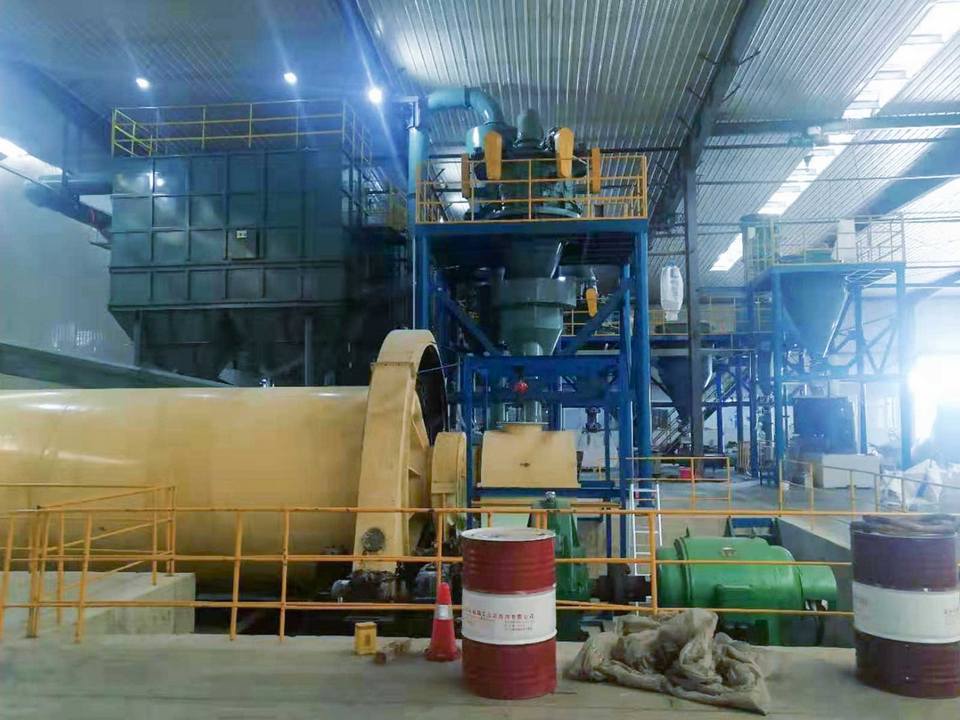
- Failure to add steel balls in time
The grinding effect of the ball mill and the output are restricted by the steel balls of the ball mill. With the grinding and impact of the steel balls in the cylinder, the steel balls will wear out. Therefore, the steel balls must be added in time to ensure the output of the ball mill consistency.

- The temperature in the cylinder rises
The temperature of the ball mill increases during operation, the effective strain of the ball mill to form nanomaterials is reduced, and the crystal grain size increases, which significantly affects the mechanical properties of the powder made into bulk materials. Moreover, whether the final product of ball milling is solid solution, intermetallic compound, nanocrystal, or amorphous phase, diffusion is involved, and diffusion is affected by the grinding temperature, so temperature is also an important factor affecting the output of the ball mill.
- The material moisture content is too high
Due to the large moisture content of the material, the uniformity of the feeding is affected and the feeding time is prolonged. Secondly, because the wet material is fed too much, it may cause the phenomenon of paste ball and paste liner in the mill, and even "full grinding" will be forced to stop the grinding process. Generally speaking, for every 1% increase in the comprehensive moisture of the material entering the mill, the output of the ball mill will decrease by 8%-10%; when the moisture is greater than 5%, the ball mill basically cannot perform grinding operations.
- Addition ratio of grinding aid
Grinding aids are allowed to be added in the cement production process, but the addition amount should not exceed 1%. Adding more than this standard is unreasonable. In addition, most of the grinding aids are substances with strong surface activity, which are not suitable for all materials. They should be added reasonably according to the nature of the materials.
To sum up, if the output of your ball mill is getting lower and lower, first check whether the "full grinding" phenomenon occurs. If not, then perform investigations based on other reasons to find the crux of the problem, and then you can fundamentally solve the problem of low output. The problem caused the ball mill to resume production as soon as possible, bringing greater economic benefits.
The role and types of grinding media of ball mill
The function of the grinding body in the ball mill is to crush and grind the bulk materials fed into the mill into fine powder. The particle size of the material that has just entered the mill is about 20mm, and it will eventually be ground into a fine powder below 0.08mm (generally, the sieve residue should not exceed 15%). The grinding body mainly impacts the newly fed bulk materials (in the coarse grinding chamber), and grinds them as a supplement. During this period, collisions between the grinding bodies are unavoidable. The strong sound when the mill is running mainly comes from the coarse grinding chamber. As the particle size of the material decreases, it will flow to the next silo, the grinding body will turn to be mainly grinding, the sound will gradually weaken, and it will be sent out of the grinding mill after being finely ground. Different types and specifications of grinding bodies are used in different grinding chambers.
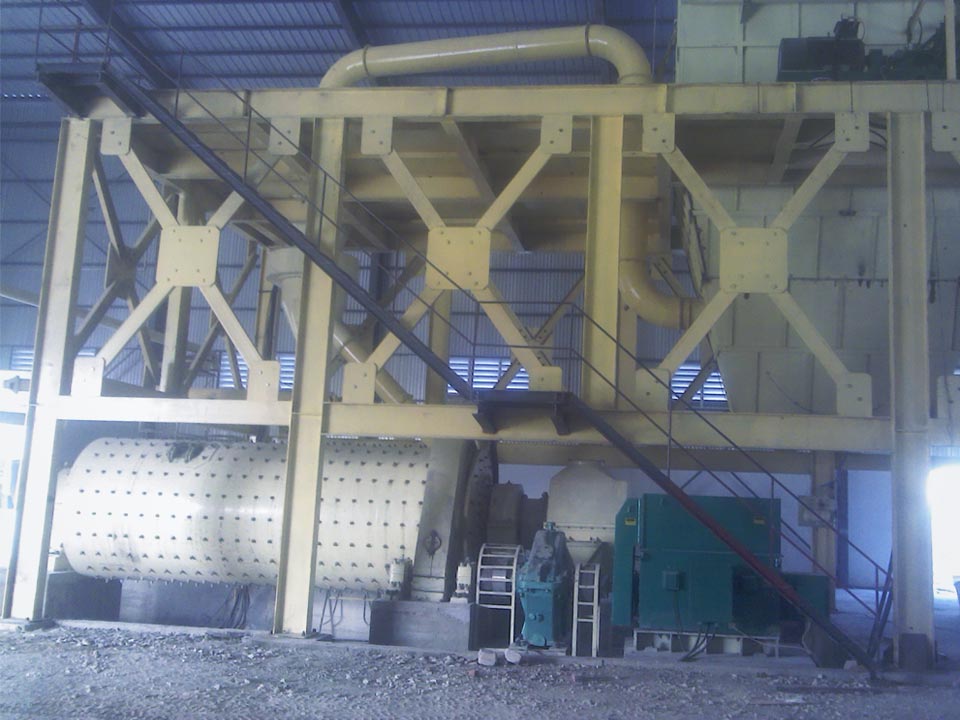
①Steel ball: a kind of grinding body widely used in ball mills. It comes into contact with the material during the grinding process and has a large impact on the material. It is mainly used in a warehouse (the feed end is also a coarse grinding warehouse) and a double warehouse. Two chambers (coarse and fine grinding chambers) for closed-circuit mills, one and two chambers for tube mills. The diameter of the steel ball is between Ф15~125mm. According to the requirements of the grinding process, the coarse grinding chamber generally selects Ф50~110mm, and the fine grinding chamber uses various specifications of Ф20~50mm.
②Steel section: In the fine grinding chamber of the mill, the material is mainly ground. The steel (iron) section can replace the steel ball. Its shape is short cylindrical or truncated cone. It has line contact with the material and has a strong grinding effect. But the impact is small, so it is more suitable for the fine grinding chamber.
③Steel rod: Steel rod is a kind of grinding body commonly used in wet grinding, with a diameter of Ф40~90mm, and the length of the rod is 50~100mm shorter than the length of the grinding chamber.
Regardless of the type of abrasive body, it has high requirements for its material: it must have high wear resistance and impact resistance. The quality of its material affects the grinding efficiency and the operation rate of the mill. The material is required to be hard, wear-resistant and not easy to break. For example, high chromium cast iron is an alloy white cast iron with high chromium content, which is characterized by wear resistance, heat resistance, corrosion resistance, and considerable toughness. Low chromium cast iron contains less chromium elements, and has higher toughness. Chromium cast iron is poor, but has good wear resistance. It is suitable for use as the liner of small balls, iron sections and fine grinding chambers.
Introduction & advantages of ball mill
The ball mill is the key equipment for grinding materials after being crushed. This type of grinding machine is equipped with a certain number of steel balls as grinding media in its cylinder.
It is widely used in the production of cement, silicate products, new building materials, refractory materials, fertilizers, ferrous or non-ferrous metal beneficiation, and glass ceramics. The ball mill is suitable for grinding various ores and other materials. It is widely used in mineral processing, building materials and chemical industries. It can be divided into dry and wet grinding methods. According to different ways of discharging, it can be divided into grid type and overflow type.
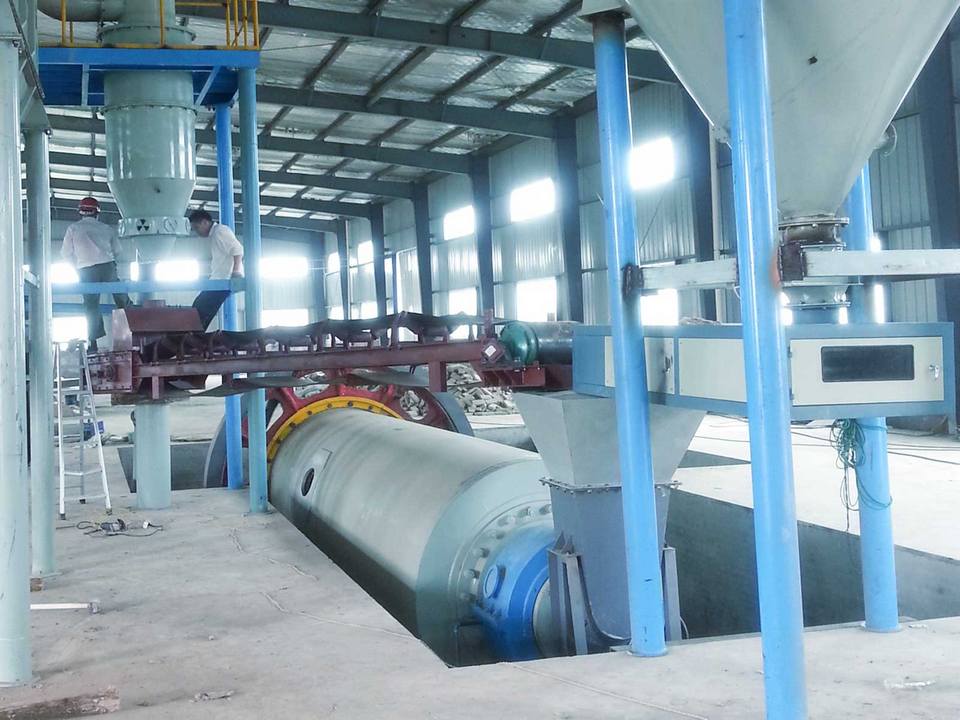
The ball mill is mainly composed of a cylindrical barrel, an end cover, a bearing, a large transmission gear ring and other components. The barrel is filled with steel balls or steel bars with a diameter of 25-150mm, which is called a grinding medium, and its loading is the entire barrel. 25%-50% of effective volume. There are end caps at both ends of the cylinder. The end caps are connected with the flange at the end of the cylinder by bolts. There is a hole in the middle of the end cap, which is called a hollow shaft. The hollow shaft is supported on bearings and the cylinder can rotate. A large gear ring is also fixed on the cylinder. In the drive system, the electric motor drives the large gear ring and the cylinder through the coupling, reducer and pinion to rotate slowly. When the cylinder rotates, the grinding medium rises to a certain height with the cylinder wall, and then falls in a parabola or cascade down. Because there is a hollow shaft on the end cover, the material is fed into the cylinder from the hollow shaft on one side, and gradually spreads and moves to the other side. During the movement of the material, the rotating cylinder brings the steel ball to a certain height and falls to hit the material. While a part of the steel balls in the cylinder body in a cascading state have a grinding effect on the material, the entire movement process is also the grinding process of the material.
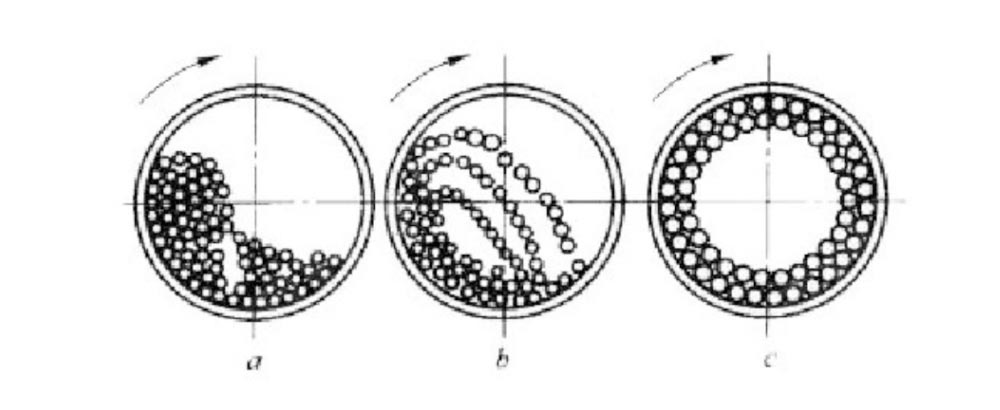
The advantages of the ball mill are:
1. Stable operation and reliable work;
2. The use of materials and processing techniques with excellent performance extends the service life of main components;
3. Use three-dimensional design and simulation to optimize the design to make the equipment more cost-effective;
4. A variety of equipment types to meet the needs of different production processes.
Maintenance measures of ball mill
The maintenance of the ball mill is a must for the operator. The formulation of reasonable maintenance measures is the key method to prolong the service life of the ball mill, increase the production capacity and reduce the failure rate, and it is also a direct method.

- Keep the equipment clean
Cleaning work is a must for the ball mill. Only by removing all the impurities inside and outside the machine can the normal operation of the equipment be ensured. If there are too many impurities, not only will it be difficult to start the equipment, but also the phenomenon of grinding and poor output will occur. The key is to cause damage to the equipment to a certain extent. It is recommended to clean the ball mill regularly, such as the base. When there are too many impurities in the base, it is easy to rust. Therefore, the impurities should be removed first, and the base should be cleaned.
- Reasonable lubrication
After the ball mill is used for the first time and continuously operated for one month, the lubricating oil must be replaced once (select the correct lubricating oil). When replacing, all lubricating oil must be removed, and the ball mill should be cleaned, and then replaced with new lubricating oil. In the subsequent use of the ball mill, the lubricating oil must be replaced every six months of operation. When it is found that there is too much oil shortage, the cause should be analyzed in time. At the same time, the lubrication of each lubrication point should be strengthened. It is recommended to add grease to the lubrication point every week during the running-in period, except for special requirements.
- Periodic inspection
Regularly check and repair all parts of the ball mill, so that not only the abnormalities and problems of the machine can be found in time, but also the occurrence of failures can be prevented. At the same time, the ball mill will be maintained. For example, check whether there is oil leakage on the joint surface, whether there is water leakage and whether there is a leakage phenomenon, and determine the use state of the fastener. Especially for some vulnerable parts, the frequency of inspection and timely maintenance and repair should be strengthened to extend the service life of the parts and increase the service life of the ball mill.
Factors affecting the output of ball mill
Ball mill is a commonly used grinding equipment, and the output is an important indicator to measure the quality of the ball mill. So what are the factors that affect the output of the ball mill?
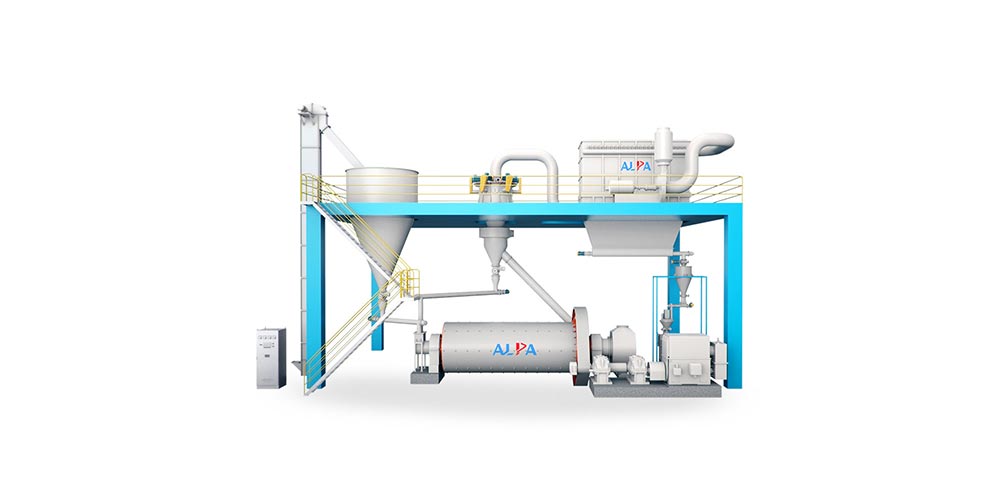
1. The volume of the mill. Under normal circumstances, the larger the volume of the mill, the greater the processing capacity.
2. What is the water content of the material? If the water content of the material is too high, it will affect the uniformity of the feeding and make the feeding time too long. Secondly, if the wet material is fed too much, it may cause the phenomenon of "sticky grinding". Therefore, the moisture of the feed is usually required.
3. Loading capacity of grinding body. After the mill runs for a period of time, the output will become lower and lower. This is because with the impact and grinding of the grinding body in the cylinder, the grinding body will wear out, so the grinding body must be refilled in time. But it is not that the more abrasives, the better. If the steel balls accumulate too high, the impact of the steel balls on the material will be slowed down, and on the contrary, the grinding output will be reduced.
4. Grinding time. If the grinding time is too short, it will cause insufficient grinding of the material. In addition, starting the mill frequently will shorten the service life of the equipment. If the grinding time is too long, the temperature in the cylinder will increase, which will affect the grinding efficiency.
5. The ball mill is "full grinding". After the ball mill has been running for a period of time, due to the excessive feed of the ball mill or the increase in the particle size of the material, or the excessive moisture of the material entering the mill, the grate gap of the grate plate will be blocked, which will cause the material in the mill to be unable to be discharged out of the mill in time, and "saturated grinding" "The phenomenon affects the output of ball mills. In this case, it is necessary to adjust the materials, clean the grate seams, and increase the ventilation in the mill.
6. Adding ratio of grinding aid. Grinding aids can promote the grinding of materials, but most of the grinding aids are substances with strong surface activity and are not suitable for all materials, so the amount of grinding aids added should meet a certain proportion.
When the output of the ball mill is found to be lower and lower during the production process, it should be investigated in turn to find out the problem and resume production as soon as possible.
Reasons and solutions for the coarse particle size of the ball mill
Too coarse particle size of the ball mill discharge may be due to many reasons, and the solution to each cause will be different. We need to come up with a corresponding diagnosis and treatment plan.
The main reason for the excessively coarse particle size of the ball mill: the “roughness” of the ball mill refers to the abnormal phenomenon that the fineness of the mill product is significantly coarser and difficult to control. It generally appears in the double-chamber open-circuit tube mill with a relatively small length and diameter. Excessive capacity of the coarse grinding chamber and insufficient capacity of the fine grinding chamber are the main reasons for "roughness". In this case, even if the output of the ball mill is appropriately reduced, the fineness of the product is still relatively coarse. The coarseness of the product due to the excessive feeding volume does not belong to this example.
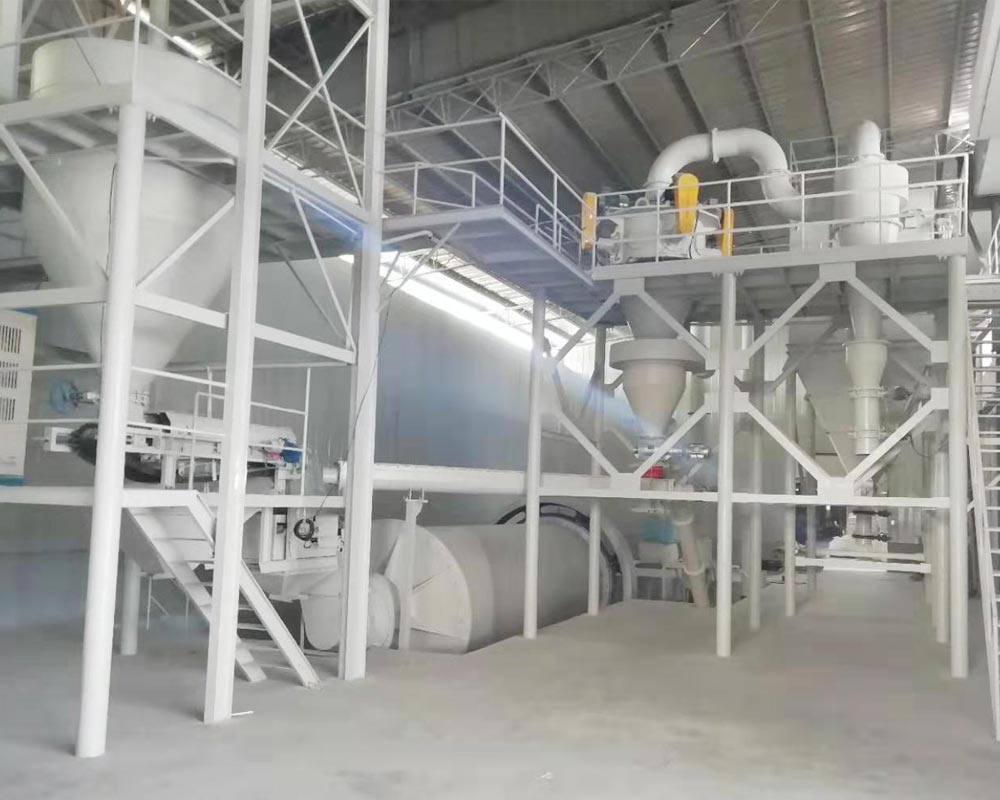
The reason why the grinding capacity of the coarse grinding chamber is significantly higher than that of the fine grinding chamber:
1) The filling rate of the grinding body of the coarse grinding chamber is too much higher than that of the fine grinding chamber;
2) The average ball diameter of the steel balls in the coarse grinding chamber is too large;
3) The length of the fine grinding chamber is too short;
4) The wind speed in the mill is too high;
5) Unreasonable grinding body gradation;
6) The grate seam of the compartment board or the discharge grate board is too large.
When "rough running" occurs, the cause should be found out, and specific measures should be taken to solve it. Generally speaking, if there is no such phenomenon and other conditions have not changed, it is just that the grinding body is newly equipped. It is likely that the average ball diameter of the coarse grinding chamber is too large, the filling rate is too high, or the grinding body gradation is unreasonable. For small tube mills with a small length-to-diameter ratio, use 1 to 2 balls more in the grading of one bin, or appropriately increase the filling rate of the fine grinding bin, and appropriately increase the lifting capacity of the fine grinding bin liner, which can solve this problem. problem.
Measures to improve the lifting capacity of the lining of the fine grinding chamber include: on the one or two circles of the lining before the feed end, every other piece of the lining can be welded with a steel bar or square steel that can form a 15-20mm convex corner. The first few laps of the liner were replaced by a flat liner with a corrugated liner: the severely worn flat liner was replaced with a new liner every few rows.
What to do if the sound of the ball mill is too loud when using it
The ball mill is a commonly used grinding equipment in the beneficiation plant, which plays a pivotal role in the beneficiation process. However, it has the disadvantages of high noise and short noise propagation distance. Not only will it seriously affect the working conditions of employees, but it will also harm their ears and seriously damage their physical and mental health. With the development of modern technology and the improvement of industrial noise pollution, it is very important to reduce the noise during the work of the ball mill through effective termination methods and create a quiet and comfortable production environment.
The ball mill will produce strong vibration and noise when grinding materials, the noise is as high as 100~115dB, which is harmful to the operator and the surrounding environment. The noise of the ball mill is very high, which has always been a concern for the users of the ball mill.
The noise of the ball mill is mainly caused by the collision between the metal balls in the drum, the cylinder wall liner and the processed materials. The sound radiates outward along the liner, the cylinder wall, and the inlet and outlet of the material, including the impact sound between the steel ball and the steel ball, the impact sound between the steel ball and the liner, the impact sound and friction sound of the material. The noise level of the ball mill is related to the diameter and speed of the ball mill, as well as the properties of the material and the block size. The noise of the ball mill is basically steady-state noise, which has a wide frequency band and high sound energy with low, medium and high frequency components. The larger the diameter, the stronger the low frequency component.

Noise reduction method of ball mill
- Add a soundproof cover to the ball mill
The soundproof cover can be divided into fixed type, movable type and curtain type. The fixed sound insulation cover has high sound insulation, but it will make the ventilation and heat dissipation performance of the workshop worse, and the maintenance and repair of the equipment will be difficult. On the basis of the fixed sound insulation hood, the movable sound insulation hood is improved and the maintenance performance is improved, but the sound insulation capacity is reduced, the ventilation and heat dissipation problems have not been solved, and it needs to occupy more space and space. The curtain-type sound insulation cover was developed to solve the contradiction between the large space occupied by the movable sound insulation cover and the venue, and it has the advantages of disassembly and assembly. The advantages of flexible installation and centralized storage are still poor ventilation and heat dissipation and high prices.
- Replace manganese steel lining with rubber lining
This method is one of the technical measures to radically reduce the noise generated by the cylinder based on the mechanism of the noise generated by the ball mill. The rubber liner is easy to install and has a good damping effect. When the bush is impacted by a steel ball, the impact duration can be increased, and the noise reduction effect is obvious. However, when choosing a rubber liner, attention should be paid to rubber plates with good high temperature resistance and wear resistance. At the same time, a heat-resistant soft rubber pad can be placed between the inner surface of the ball mill drum and the liner. In order to prevent the soft rubber pad from overheating, an industrial felt with a thickness of 10-15mm is placed between the liner of the ball mill and the soft rubber pad. The noise of the ball mill can be reduced below the allowable standard.
- Strengthen the ventilation, heat dissipation and noise reduction treatment of the ball mill equipment
The noise of the ball mill is not only related to the influence of the equipment itself, but also closely related to the production material itself. For many production materials, a large amount of heat is generated during the contact process of steel balls, which may directly affect the effect of noise reduction measures. Therefore, in the working process of the ball mill, attention should be paid to the ventilation and heat dissipation of the ball mill equipment, and the heat generated during the production process should be treated in time.
- Add the ball milling chamber
If conditions permit, concentrate the ball mill room in a special ball mill room, and change the ball mill room into a special soundproof room, the effect will be better than the soundproof cover. However, it is necessary to pay attention to solving the problems of monitoring, indoor heat dissipation and maintenance during the operation of the ball mill.
